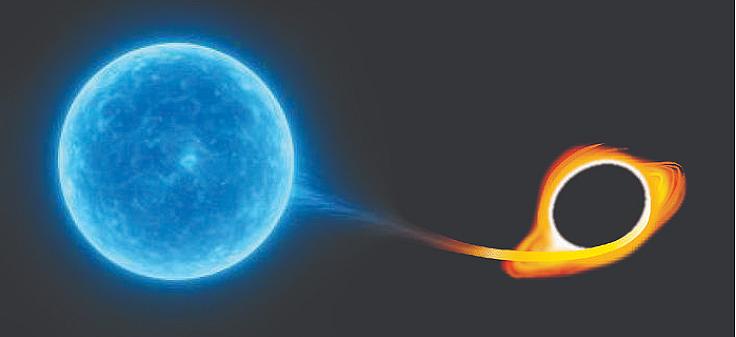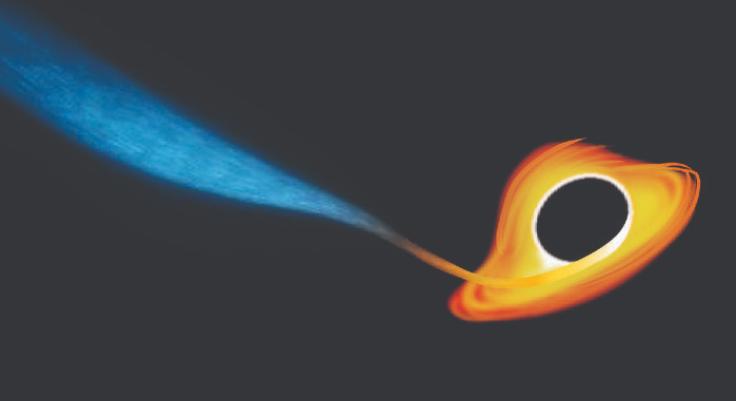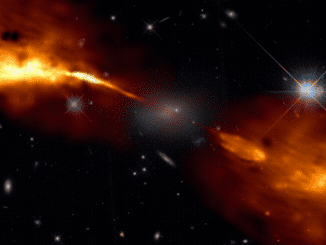
HONOLULU, Hawaii, June 4, 2025 (ENS) – Astronomers from the University of Hawaiʻi’s Institute for Astronomy have found the most energetic cosmic explosions yet discovered, naming the new class of events “extreme nuclear transients,” or ENTs. These extraordinary phenomena occur when massive stars – at least three times heavier than our Sun – are torn apart after moving too close to a supermassive black hole.
This disruption of the stars releases vast amounts of energy visible across enormous distances. The team’s findings were recently detailed in the journal “Science Advances.”

“We’ve observed stars getting ripped apart as tidal disruption events for over a decade, but these ENTs are different beasts, reaching brightnesses nearly 10 times more than what we typically see,” said Jason Hinkle, who led the study as the final piece of his doctoral research at the Institute for Astronomy.
“Not only are ENTs far brighter than normal tidal disruption events, but they remain luminous for years, far surpassing the energy output of even the brightest known supernova explosions,” Hinkle said.
The immense luminosities and energies of these ENTs are truly unprecedented. The most energetic ENT studied, named Gaia18cdj, emitted 25 times more energy than the most energetic supernovae known.
While typical supernovae emit as much energy in one year as the Sun does in its 10 billion-year lifetime, ENTs radiate the energy of 100 Suns over a single year.

ENTs were first discovered when Hinkle began a systematic search of public transient surveys for long-lived flares emanating from the centers of galaxies.
He identified two unusual flares in data from the European Space Agency’s Gaia mission that brightened over a timescale much longer than known transients and without characteristics common to known transients.
“Gaia doesn’t tell you what a transient is, just that something changed in brightness,” said Hinkle. “But when I saw these smooth, long-lived flares from the centers of distant galaxies, I knew we were looking at something unusual.”
The discovery launched a multi-year follow-up campaign to figure out what these sources were. With help from the University of Hawaiʻi’s Asteroid Terrestrial-impact Last Alert System, the W. M. Keck Observatory, and other telescopes across the globe, the team gathered data across the electromagnetic spectrum.
Because ENTs evolve slowly over several years, capturing their full story took patience and persistence. Recently, a third event with similar properties was discovered by the Zwicky Transient Facility and reported independently by two teams, adding strong support to the discovery that ENTs are a distinct new class of extreme astrophysical events.
The authors determined these extraordinary events could not be supernovae because they release far more energy than any known stellar explosion. The sheer energy budget, combined with their smooth and prolonged light curves, pointed to an alternative mechanism – accretion onto a supermassive black hole.

Yet ENTs differ from normal black hole accretion, which typically shows irregular and unpredictable changes in brightness. The smooth and long-lived flares of ENTs indicates a distinct physical process – the gradual accretion of a disrupted star by a supermassive black hole.
Benjamin Shappee, associate professor at the Institute for Astronomy and study co-author, emphasized the implications. “ENTs provide a valuable new tool for studying massive black holes in distant galaxies. Because they’re so bright, we can see them across vast cosmic distances – and in astronomy, looking far away means looking back in time.”
“By observing these prolonged flares, we gain insights into black hole growth when the universe was half its current age when galaxies were happening places – forming stars and feeding their supermassive black holes 10 times more vigorously than they do today,” Shappee said.
The rarity of ENTs, occurring 10 million times less frequently than supernovae, makes their detection challenging and dependent on sustained monitoring of the cosmos. Future observatories like the Vera C. Rubin Observatory and NASA’s Roman Space Telescope promise to uncover many more of these spectacular events, revolutionizing our understanding of black hole activity in the distant, early universe.
Hinkle concluded, “These ENTs don’t just mark the dramatic end of a massive star’s life. They illuminate the processes responsible for growing the largest black holes in the universe.”
Featured image: An accretion disk forms around a black hole, powering an extreme nuclear transient, ENT. 2025 (Photo courtesy University of Hawaiʻi)


